
Home to Cabo Blanco, Costa Rica’s first nature reserve, the small village of Cabuya is tucked away on the faraway tip of Nicoya Peninsula. Interestingly, Cabuya is one of the country’s lesser-known attractions, and as such, provides a somewhat refreshing respite from the otherwise overwhelmingly touristy places. Facing the village’s spectacular coastline is Cabuya Island Cemetery, a rocky islet with an unusual burial tradition, whose accessibility is limited to low tide periods.
The village of Cabuya and its main pathway to the island are located about 6.5 kilometers or 20 minutes by car via a pothole-ridden road from the center of close-by Montezuma.

photography by: Omri Westmark
After crossing a turquoise-colored hovel, you’ll finally have the first glimpse of Cabuya Cemetery Island, which depending on the tide cycle, is surrounded by dozens of docking vessels that wait for the sea to reclaim the surrounding area until their next deep-sea journey.
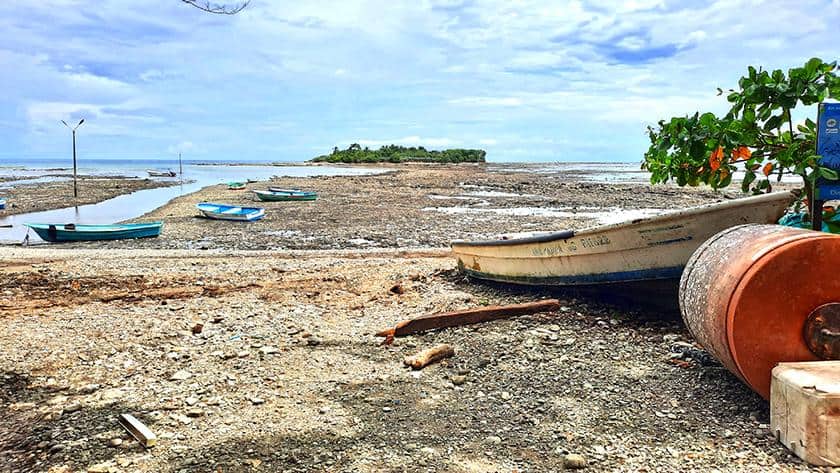
photography by: Omri Westmark
As you’ve probably understood by now, the island of Cabuya, also known as Isla de Cabuya, is accessible only during low-tide, when a narrow passageway across the Pacific Ocean is revealed.

photography by: Omri Westmark
Since the tidal period vary daily, it is warmly recommended to check the low-tide timetable prior to your journey, otherwise you might find yourself endlessly waiting for the pathway to be cleared.
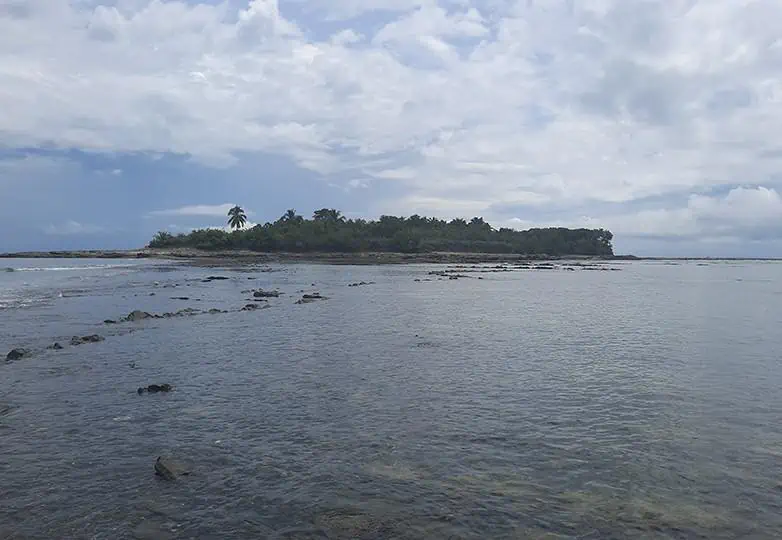
photography by: Omri Westmark
The 500-meter pathway from the mainland to the island takes about 6-10 minutes to complete. Even if you slightly missed the ideal low tide time, you can wade your way to the island through Cabuya’s shallow waters, but bear in mind that during high-tide it is virtually impossible to cross back by foot, and so, you’ll have to wait a couple of hours on the island until it is safe to go back.
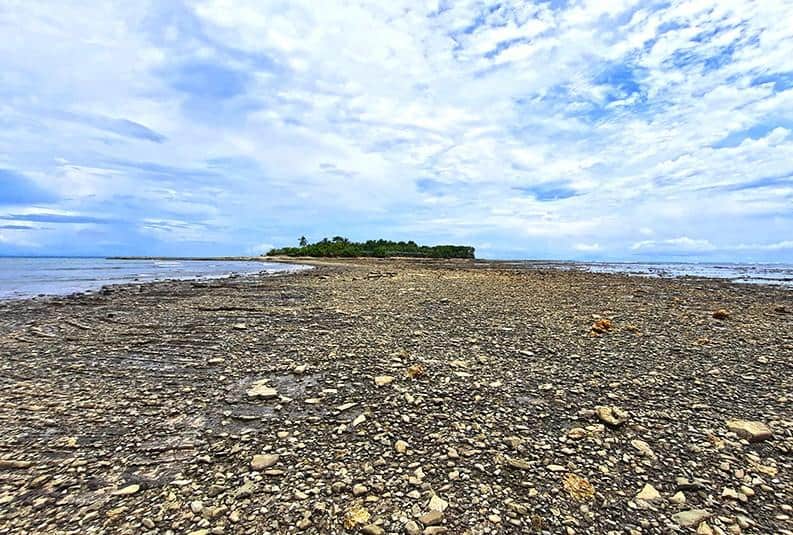
photography by: Omri Westmark
Originally founded as a fishing village, Cabuya’s economic profile is far more diverse these days, and yet, fishing remains a major source of income as evident by the numerous boats scattered across its coastline at low-tide.
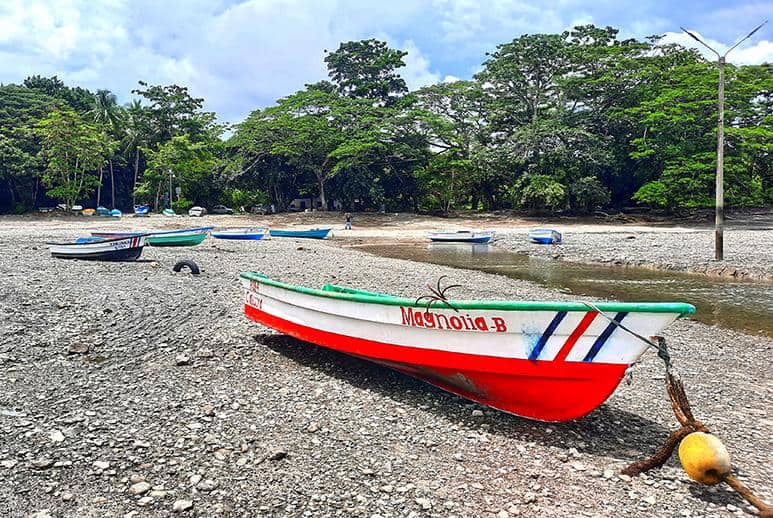
photography by: Omri Westmark
As you walk along the passageway, you’ll be treated with a panoramic view of the Gulf of Nicoya, which is renowned for its world-class snorkeling and surfing options. An orchestra of hovering buzzards above you will most probably accompany you along the short way, as if what awaits visitors on the other side wasn’t creepy enough.
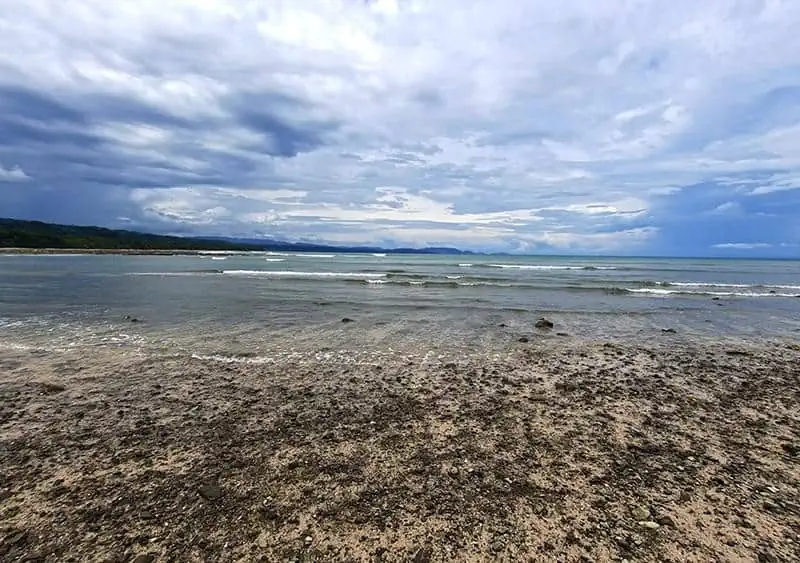
photography by: Omri Westmark
Moments before you’ve officially entered the eerie premises of the graveyard, you’ll have a chance to see the 3.5-hectare island at its fullest glory, dominated by the swinging slender palm trees and most notably, the Giant Cabuyas, the aloe shrub that shares its name with the village, the beach and the island.

photography by: Omri Westmark
After successfully completing the mid-sea trail you’ll reach the cemetery‘s iconic white gate that greets visitors on their way into the spooky necropolis.

photography by: Omri Westmark
The island has been serving as a burial ground for more than 3 centuries, after according to the legend, an unidentified body was washed away and found by a local fisherman who together with his fellow villagers decided to bury the unknown person in the island, which as a result became the final resting place for many of Cabuya’s residents.
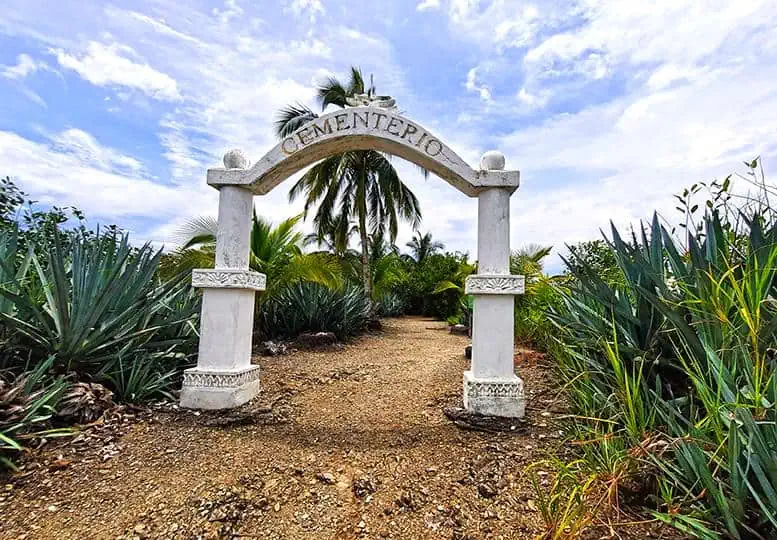
photography by: Omri Westmark
This centuries old tradition still takes place to these days, when roughly every couple of months a funeral is being held at the island. The deceased’s last journey usually starts at a procession in the middle of the night during a full moon, where the body is carried along the pebble-littered passageway, and then followed by a private burial ceremony.
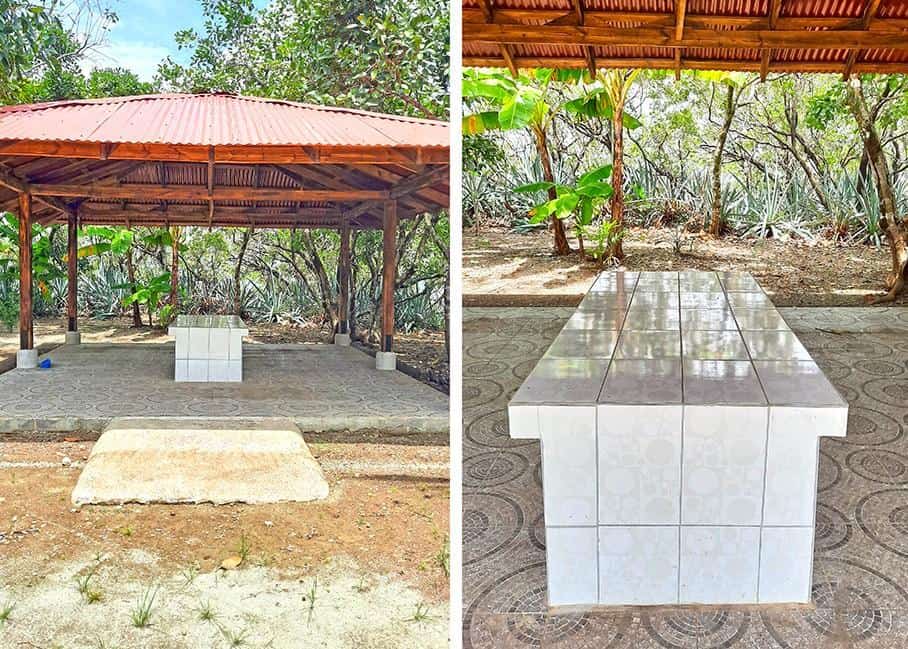
photography by: Omri Westmark
To get to the cemetery, you’ll first have to pass over the funeral home, and then proceed through a shaded path that is sandwiched between a dense shrubbery and bending coconut trees.

photography by: Omri Westmark
While the vast majority of the tombs belongs to local Cabuyans, in recent years more and more foreigners from across the world are being buried in the cemetery. It is more than plausible that their last wish for eternal rest in the island enriches the village with burial fees. What is certain though, is that this necro-immigration contributes a great deal of vividness to the graveyard, as most of the foreigners’ tombstones are unusual, flamboyant or exceptionally colored.
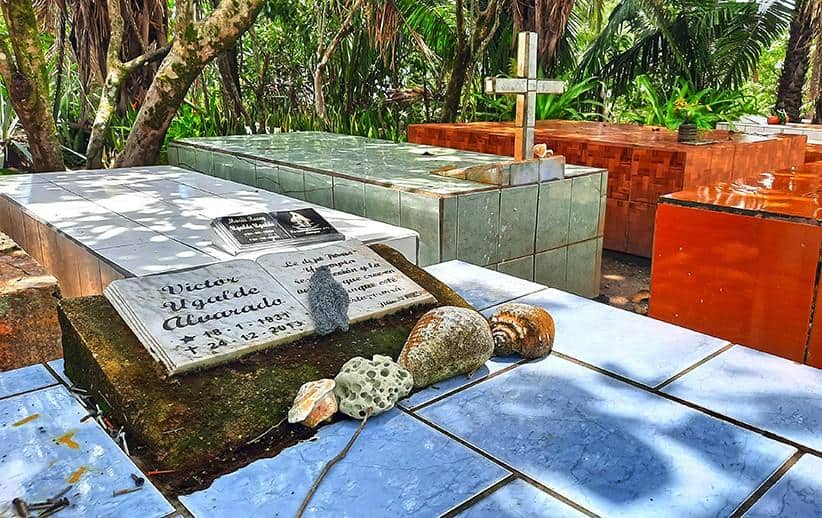
photography by: Omri Westmark
In contrary to what one might assume, despite its inaccessible location, the cemetery is a well-kept place, with most tombstones being constantly maintained, and if needed, also renovated. In fact, as the numerous shells, stones and flower testify, visitors regularly frequent the island, paying respect for their deceased loved-ones.
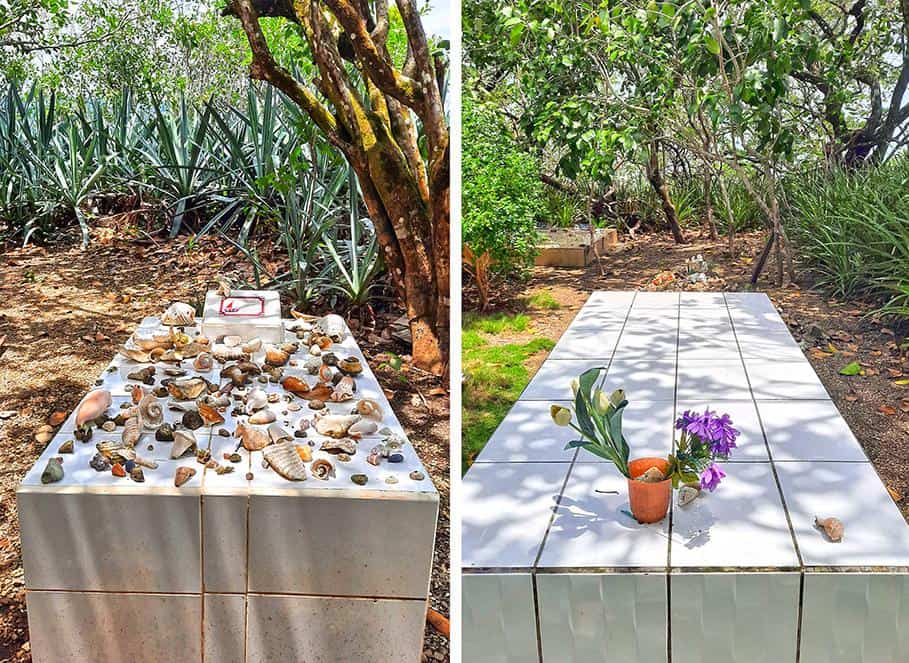
photography by: Omri Westmark
Perhaps one of the most notable graves here belongs to a person who died in 2002, whose tombstone is made of a conjoined pair of awkwardly sculpted heads.
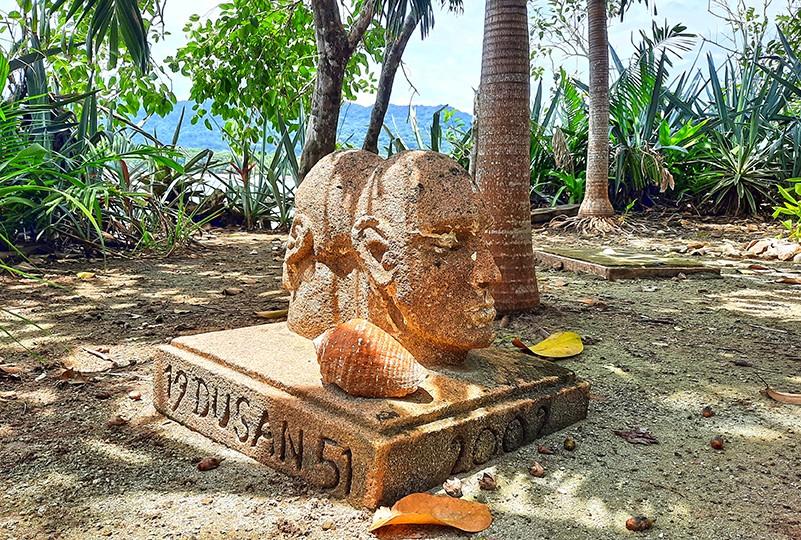
photography by: Omri Westmark
In sheer contrast, a narrow corridor links the far more conventional rectangular crypts, many of which are covered with pale-blue or brownish tiles.
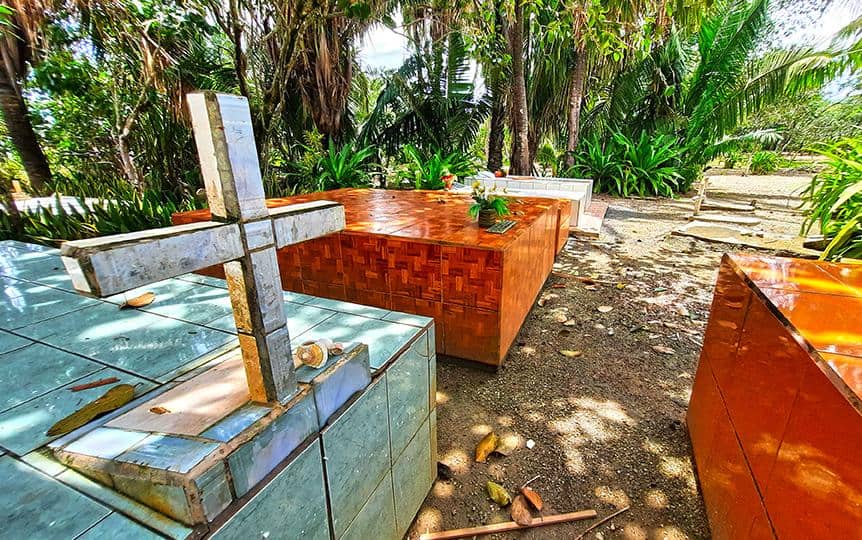
photography by: Omri Westmark
Two other instances of somewhat bizarre burial grounds are Ronland Daughtry’s grave, marked with a distorted blue cross and a bonfire-like array of stones, which reflects an eternal flame, and Ena Delcore’s tomb, adorned with a colorful stained-glass.

photography by: Omri Westmark
A foreigner named Bob who died in 2012 was bestowed with an apian marker, whereas his fellow neighbor received a rather nondescript rectangular flower bed, whose medley of debris might be replaced one day with a grown tree.
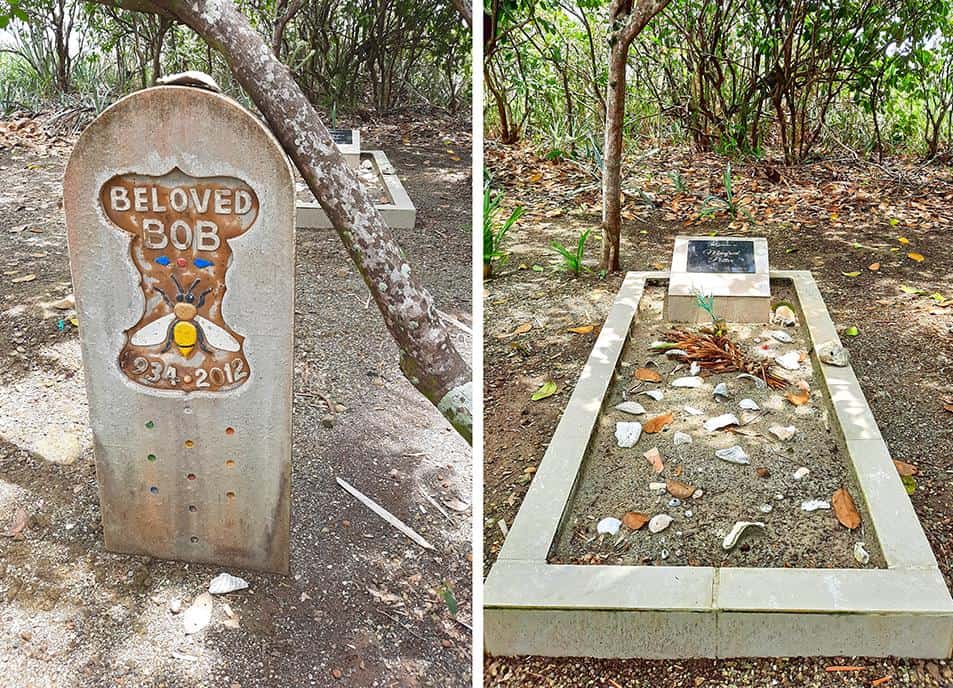
photography by: Omri Westmark
The single most exceptional grave in Cabuya is undoubtedly Frank Jaeger’s, whose tombstone is punctured by a clenched fist on one side while an airplane blade protrudes from the other side. A bit further, a nearby grave uses a salvaged piece of car to sanctify its late tenant.
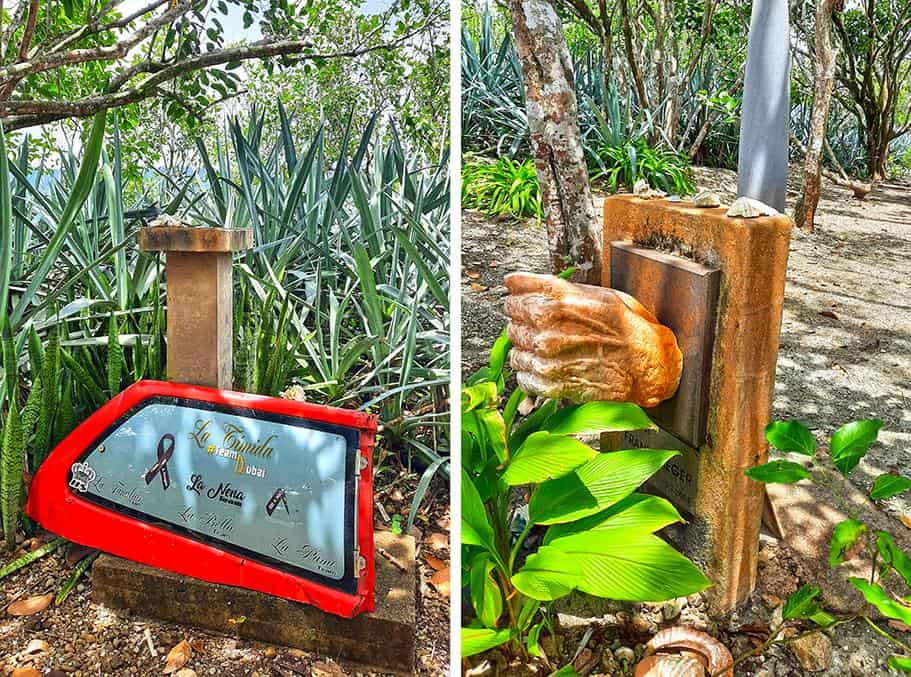
photography by: Omri Westmark
If you see the island’s spooky scenery as evocative of a horror film, you aren’t alone, as many of Cabuya’s villagers swear they hear weird sounds coming from the cemetery every now and then, describing them as different when compared to any of the known animals around. Whether the islet is haunted or not is up for you to decide, but even if you are among the skeptics, those ghostly stories are by no means ignorable.
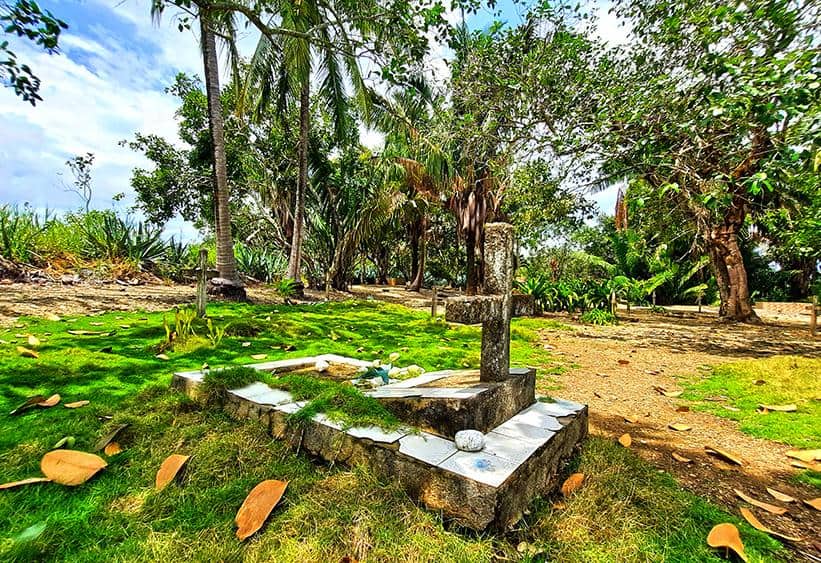
photography by: Omri Westmark
While ghosts are somewhat tricky to spot, hermit crabs are abundant throughout the entire island, relentlessly scampering until they sense danger, and then instantly retreat into their borrowed shell.

photography by: Omri Westmark
Flanked by lines of Cabuya plants and littered with dry leaves, another path leads to the island’s southern tip.
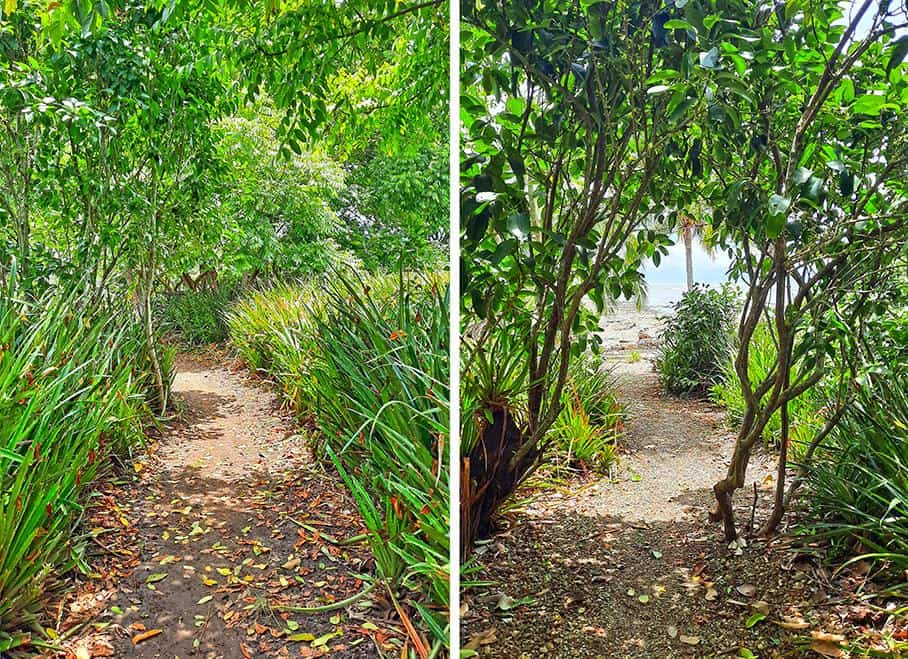
photography by: Omri Westmark
Only upon exiting the cemetery into the outer edges of the island, it is possible to gaze at the surrounding ocean that is otherwise being completely obscured by the tall vegetation that encircles the burial complex.
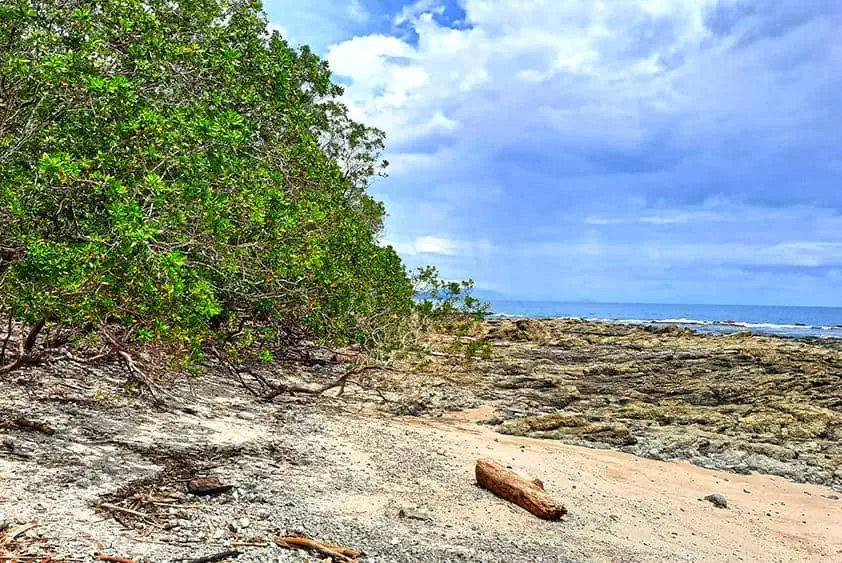
photography by: Omri Westmark
As it turns out, Isla de Cabuya doesn’t revolve entirely around its eerie cemetery as the island’s southern tip, known as Punta Cabuya, along with its northern edge are a hotspot for snorkeling thanks to their tide pools and ample marine life.
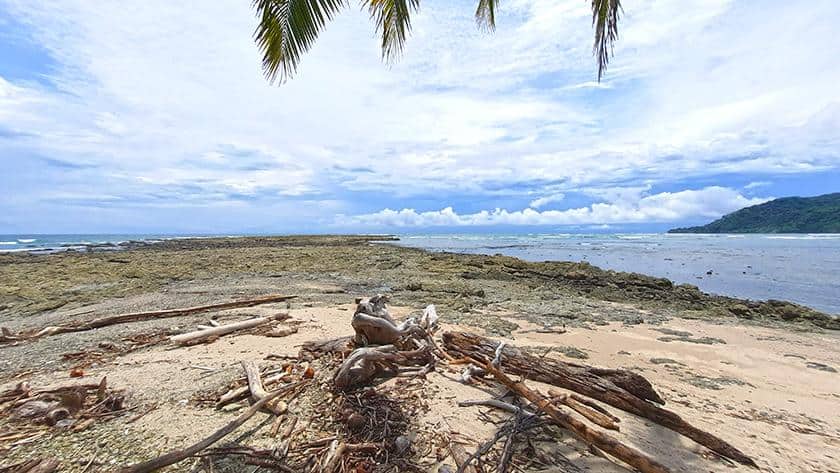
photography by: Omri Westmark